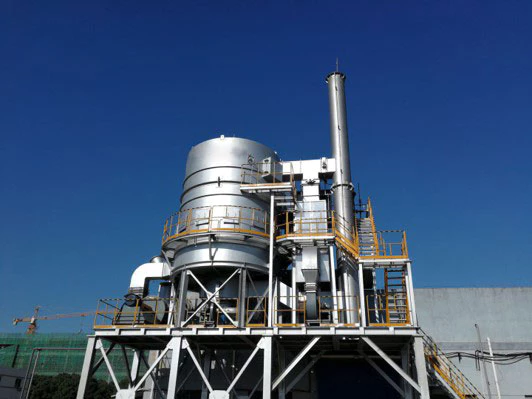What are the environmental benefits of using an RTO for air pollution control?
介紹
The use of Regenerative Thermal Oxidizers (RTOs) for air pollution control has gained significant attention in recent years. RTOs are highly efficient systems that help industries reduce harmful emissions and mitigate the environmental impact of their operations. This article explores the various environmental benefits of using an RTO for air pollution control.
1. Reduction of Volatile Organic Compounds (VOCs)
– RTOs play a crucial role in reducing the emission of volatile organic compounds (VOCs), which are harmful pollutants that can contribute to the formation of smog and have adverse effects on human health.
– By utilizing high temperatures and thermal oxidation, RTOs effectively convert VOCs into carbon dioxide and water vapor, preventing their release into the atmosphere.
2. Destruction of Hazardous Air Pollutants (HAPs)
– Another significant environmental benefit of RTOs is their ability to destroy hazardous air pollutants (HAPs). These pollutants, such as benzene and formaldehyde, can have severe health implications and contribute to air pollution.
– RTOs provide a reliable and efficient method for breaking down HAPs into less harmful byproducts, ensuring cleaner air for surrounding communities.
3. Energy Recovery
– RTOs have the added advantage of energy recovery, making them an environmentally friendly solution. The regenerative process within RTOs allows for the capture and reuse of heat generated during the oxidation process.
– By recovering and reusing this heat, industries can reduce their overall energy consumption and contribute to energy conservation initiatives, leading to a more sustainable operation.
4. Cost-Effectiveness
– Implementing an RTO for air pollution control can also have economic benefits for industries. While the initial investment may be significant, the long-term cost savings can outweigh the expenses.
– RTOs’ energy recovery capabilities reduce the reliance on external energy sources, resulting in lower operating costs and increased efficiency. Additionally, the reduced emission of pollutants can help companies avoid potential fines or penalties associated with non-compliance.
5. Improved Air Quality and Community Health
– Perhaps the most crucial environmental benefit of using an RTO for air pollution control is the improvement of air quality and community health. By efficiently removing pollutants from industrial emissions, RTOs contribute to cleaner air for surrounding areas.
– The reduction in VOCs, HAPs, and other harmful substances ensures that the air we breathe is less polluted, leading to a healthier environment and improved quality of life for local communities.
結論
Using an RTO for air pollution control offers numerous environmental benefits, including the reduction of VOCs and HAPs, energy recovery, cost-effectiveness, and improved air quality. As industries strive to minimize their impact on the environment, implementing RTOs has become a crucial step towards sustainable operations.


公司簡介
We are a high-tech manufacturing enterprise specializing in comprehensive treatment of volatile organic compounds (VOCs) waste gas and carbon reduction and energy-saving technologies. Our core technologies include thermal energy, combustion, sealing, and self-control. We have capabilities in temperature field simulation, air flow simulation modeling, ceramic heat storage material performance, zeolite molecular sieve adsorbent material selection, and VOCs high-temperature incineration oxidation experimental testing.
團隊優勢
We have an RTO technology research and development center and waste gas carbon reduction engineering technology center in Xi’an, as well as a 30,000 square meter production base in Yangling. We are a leading manufacturer of RTO equipment and zeolite molecular sieve rotary equipment globally. Our core technical team comes from the Aerospace Liquid Rocket Engine Research Institute (Aerospace Institute Six). We currently have more than 360 employees, including over 60 research and development technical backbones, including 3 senior engineers at the research professor level, 6 senior engineers, and 47 thermodynamics doctors.
核心產品
Our core products include the Rotary Valve Heat Storage Oxidation Incinerator (RTO) and zeolite molecular sieve adsorption-concentration rotary wheel. Combining our expertise in environmental protection and thermal energy system engineering, we can provide customers with comprehensive solutions for industrial waste gas treatment and carbon reduction with thermal energy utilization under various operating conditions.

認證、專利和榮譽
- 智慧財產權管理系統認證
- 品質管理系統認證
- 環境管理系統認證
- 建築業企業資質
- 高新技術企業
- Patent for Rotary Valve Heat Storage Oxidation Furnace
- 轉輪蓄熱焚化設備專利
- Patent for Disc Zeolite Rotary Wheel
How to Choose the Right RTO Equipment
When selecting suitable RTO equipment, it is important to:
- 確定廢氣的特性
- 了解當地法規和排放標準
- 評估能源效率
- 考慮維
- Analyze budget and costs
- 選擇適當的 RTO 類型
- 考慮環境和安全因素
- 執行效能測試和驗證

RTO Air Pollution Control Service Process
Our RTO air pollution control service process includes:
- Preliminary consultation, on-site investigation, and needs analysis
- Solution design, simulation modeling, and solution review
- 客製化生產、品質控制和工廠測試
- 現場安裝、調試、培訓服務
- 定期維護、技術支援、備件供應
We pride ourselves on being a one-stop solution for RTO air pollution control. Our professional team customizes RTO solutions tailored to our customers’ needs.
作者:米婭
